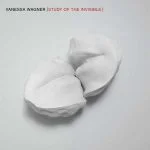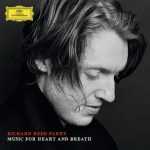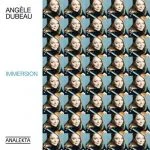
Composer: Philip Glass, Bryce Dessner, Nico Muhly, Ólafur Arnalds, Nils Frahm, Ellis Ludwig-Leone
Performer: Lavinia Meijer
Audio CD
Number of Discs: 2
Format: FLAC (tracks)
Label: Modern Classical
Size: 1.84 GB
Recovery: +3%
Scan: yes
Disc 01
Etudes
01. Etude No. 1
02. Etude No. 2
03. Etude No. 5
04. Etude No. 8
05. Etude No. 9
06. Etude No. 12
07. Etude No. 16
08. Etude No. 17
09. Etude No. 18
10. Etude No. 20
Disc 02
01. Koyaanisqatsi
Suite for Harp
02.Movement I
03. Movement II
04. Movement III
05. Quiet Music
06. A Hudson Cycle
07. Erla’s Waltz
08. Tomorrow’s Song
09. Ambre
10. In the Sky and on the Ground
11. Night Loops
12. Koyaanisqatsi. Lift off – An Arrangement of Koyaanisqatsi
This is the ninth CD and the fourth Sony release by harpist Lavinia Meijer (1983- ). This South Korean born artist was raised and educated in the Netherlands by her adoptive parents. Her musical talent has earned her Cum Laude Bachelor’s and Master’s degrees in music and she has successfully pursued a career as both a soloist and an orchestral musician. She appears to have a thorough grounding in both classical and contemporary harp repertoire and a passion for music.
In this double CD she presents her own transcriptions of ten of Philip Glass’ piano etudes and a second disc of music inspired in part by Glass’ style. The Herculean tasks of transcribing and learning these etudes elicited collaboration with the affable composer and any Glass fan will want to hear her take on these pieces.
Meijer has chosen ten (of the now twenty) piano etudes for this album. Now the harp is very close to the piano in many ways. I believe it has basically the same pitch range and it does rely on strings and a sounding board. However the playing of the instrument and the range of possibilities playable by two trained hands differs quite a bit. There are problems on transcribing piano music for the harp. It is not clear that all twenty can ever be successfully transcribed and played on Meijer’s instrument but this reviewer is truly grateful to hear the ten she has done and holds hope for the future that the remaining ten may find their way to a future release. Her interpretation of these works help to provide the listener with insight to their complexities both technically and in their interpretation.
The sassy neo-punk haircut on the album cover conjures comparisons in this reviewer’s mind of the hipness in both dress and presentation that characterized the wonderful Kronos Quartet, especially in their early days. Indeed she does seem to be following a similar trajectory and Sony no doubt has hopes that she will establish a similar marketing niche doing for her instrument what the Kronos did (and continues to do) for the string quartet. It certainly appears to be a safe bet.
One need only look to the second of the two discs to find Meijer championing some recent works written in contemporary styles that owe something to Glass’ compositional style. The disc which includes Meijer’s take on portions of Glass’ Koyaanisqatsi score along with compositions by five other composers is definitely a lighter even more pop-inflected experience at times. That is not to say that this disc is lesser in any way but that it does seem to be reaching perhaps for a younger audience less versed in the classical harp repertoire. Classical music needs to embrace other genres as the very concept of genre becomes more divisive than useful. Another Strategy reminiscent of the Kronos.
Whether or not this album manages to attract a wider audience to the charms of her instrument it does serve to showcase the range of this artist’s technical skills and the delightfully broad reach of her repertoire. This rapidly rising star seems poised to be writing a bright new chapter in the life of the concert harp, a truly exciting prospect.



